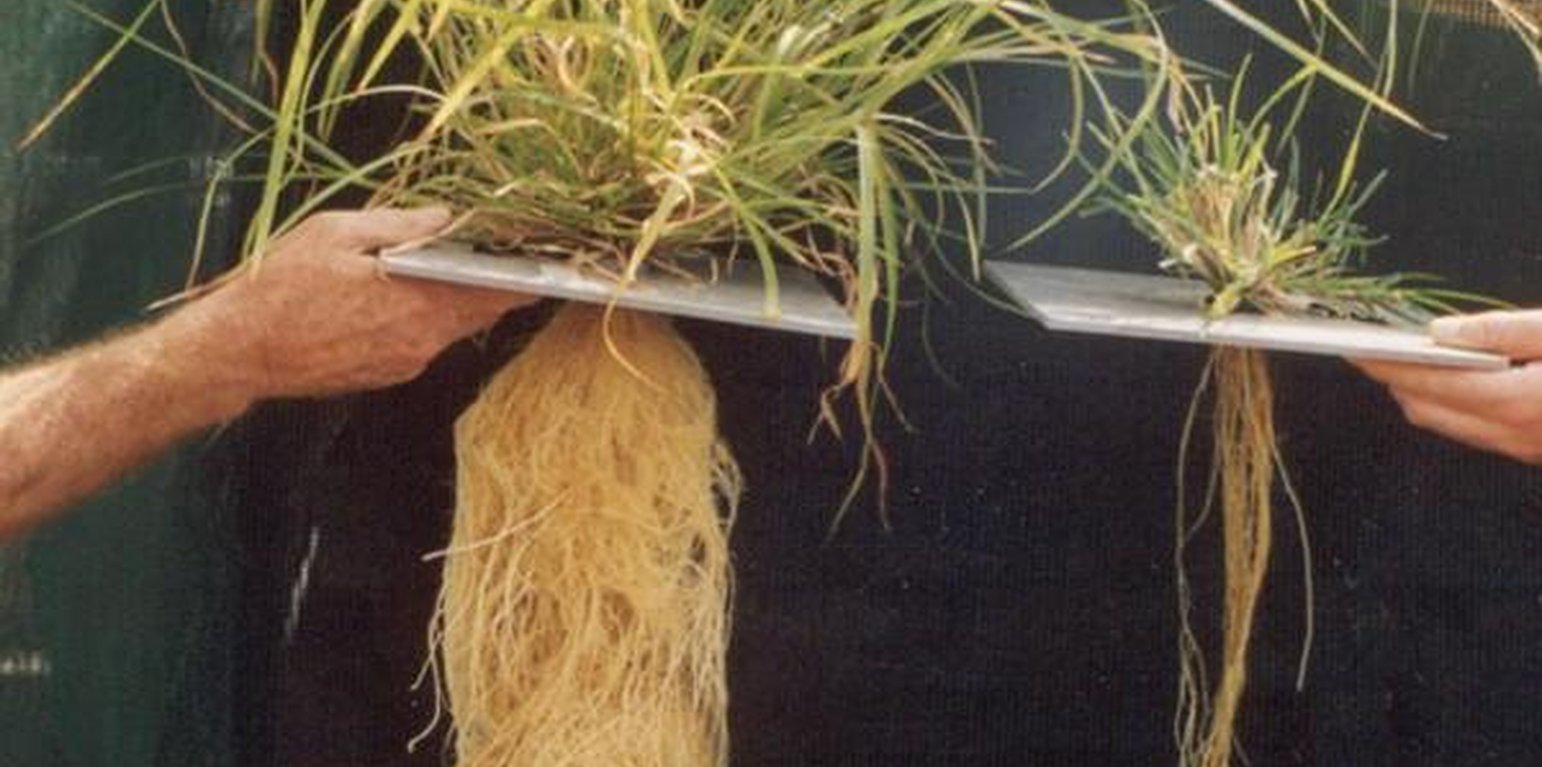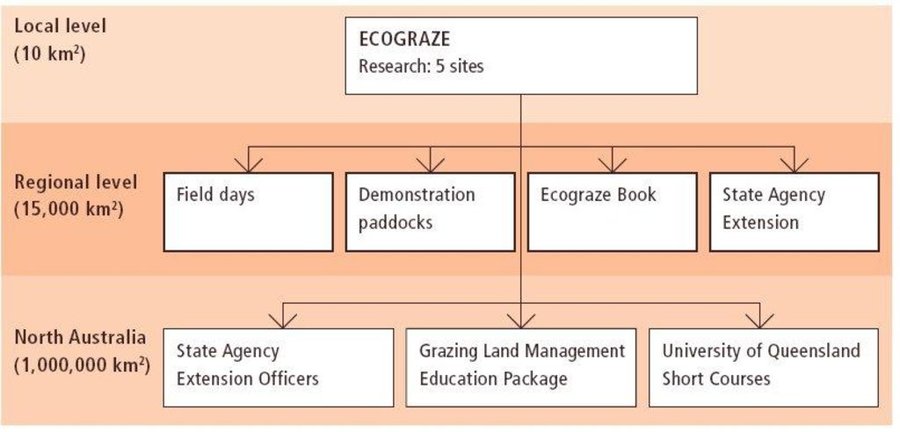Development and promotion of Ecograze
(ອອດສະເຕເລຍ)
ຄຳອະທິບາຍ
Research-based development and promotion of Ecograze principles and practices through on-farm testing and demonstration.
Aims / objectives: In 1992, Meat and Livestock Australia (MLA), a producer-owned company that provides services to the entire Australian red meat industry, initiated the Ecograze project. Ecograze was intended to provide innovative management options for the pastures in the eucalyptus woodlands of north-east Queensland. It was an eight-year collaborative research project undertaken by staff of the CSIRO (Commonwealth Scientific and Industrial Research Organisation) Sustainable Ecosystems and Queensland Department of Primary Industries with input from Queensland Department of Natural Resources and Mines. It formally concluded in 2001. However, many of the analyses and extension activities have been ongoing since then.
Methods: Ecograze was conducted on five commercial grazing properties that spanned different conditions and consequently allowed extrapolation of results to a much wider area across northern Australia. Practical grazing management strategies have been developed. The Ecograze team assessed the economic implications of managing land in various states by linking a pasture production model, to a model of farm economics. Research teams are currently testing the grazing management technology in commercial situations to understand the real costs and implications of implementing the research-derived Ecograze recommendations. The on-farm tests are supported by a number of new initiatives. These include a MLA funded project to specifically implement the Ecograze principles on farms as a means of reducing sediment and nutrients pollution of waterbodies. The National Action Plan for Salinity and Water Quality, through incentives, supports land management practices to reduce erosion, increase ground cover and minimise runoff. Funding is also provided by the Natural Heritage Trust to fence and sub-divide paddocks. All of these initiatives are supported by State Government agencies, who have extension staff based in the regions to assist farmers with implementing new practices. In the case of Ecograze, there are extension officers in the NE Queensland region who are actively promoting its management principles and are assisting producers in planning new strategies. Many of the Ecograze principles are also included in a new Grazing Land Management (GLM) Education package, developed by MLA and research and development agencies. The GLM package, which is delivered via a three-day workshop, is being extended to producers across northern Australia.
This approach highlights the importance of active collaboration between researchers, farmers, the beef industry and the government - in this case to develop a system to improve the condition of grazing lands. Through the central involvement of research, management options have been identified to suit different land users' needs, climates, grazing pressures and pasture conditions
ສະຖານທີ່
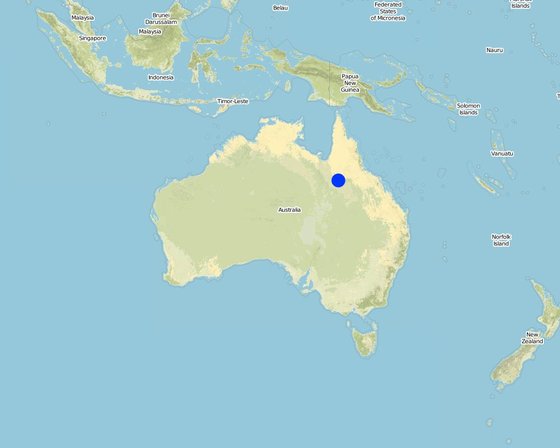
ສະຖານທີ່: Queensland, Northern Australia, ອອດສະເຕເລຍ
ການຄັດເລືອກພື້ນທີ່ ທີ່ອີງໃສ່ຂໍ້ມູນທາງພູມີສາດ
ວັນທີເລີ່ມຕົ້ນ: 1992
ປີຂອງການສິ້ນສຸດ: 2001
ປະເພດຂອງແນວທາງ
-
ພື້ນເມືອງ / ທ້ອງຖີ່ນ
-
ການລິເລີ່ມ ພາຍໃນປະເທດ ທີ່ຜ່ານມາ / ນະວັດຕະກໍາ
-
ພາຍໃຕ້ໂຄງການ / ແຜນງານ
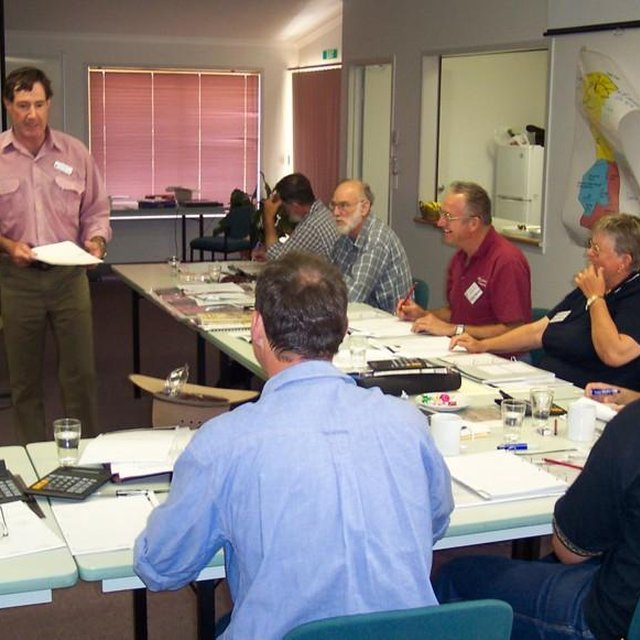
Programme organization: Ecograze principles are part of the Grazing Land Management education package delivered through workshops.
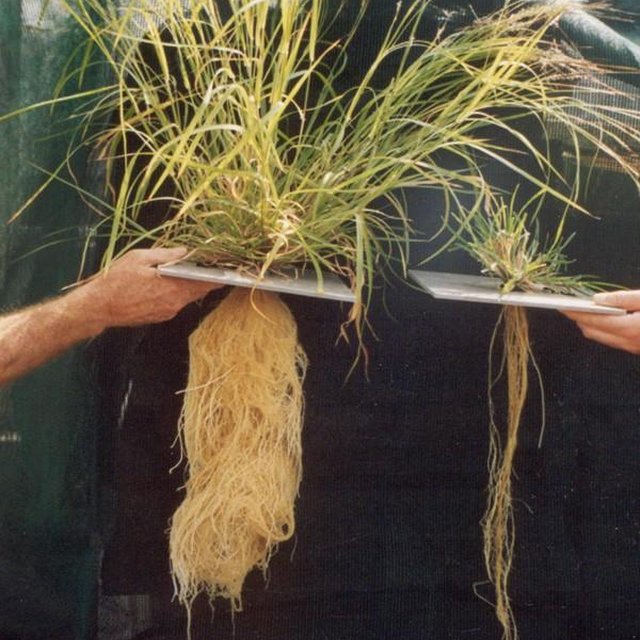
The effect of defoliation on root vigour with lightly clipped spear grass on the left compared with frequently clipped spear grass on the right.
ເປົ້າໝາຍຂອງແນວທາງ ແລະ ການປົກປັກຮັກສາສິ່ງແວດລ້ອມ
ເປົ້າໝາຍ / ຈຸດປະສົງຫຼັກໃນການຈັດຕັ້ງປະຕິບັດແນວທາງ
The Approach focused on SLM only
Development and promotion of Ecograze principles leading to adoption and thereby enhancing pasture productivity, soil condition and improved livelihoods for pastoralists.
The SLM Approach addressed the following problems: (1) Poor rangeland management leading to loss of productive palatable perennial grasses (3 P grasses) resulting in reduced ground cover, soil erosion, profit loss and in some cases irreversible land degradation. (2) Lack of understanding of underlying problems regarding mismatch of animal numbers to forage supply (pressure on grazing land) in a highly variable climate. (3) No clear technical recommendations regarding resting and rotation of rangeland
ເງື່ອນໄຂທີ່ສະໜັບສະໜູນໃຫ້ການຈັດຕັ້ງປະຕິບັດເຕັກໂນໂລຢີ ບົນພື້ນຖານແນວທາງ
-
ກ່ຽວກັບກົດໝາຍ (ສິດນໍາໃຊ້ດິນ, ສິດນໍາໃຊ້ນໍ້າ): The existing land ownership, land use rights / water rights helped a little the approach implementation: In general, implementation of Ecograze principles is undertaken by an individual on private leasehold land. Ecograze is well suited to this individualised system.
ເງື່ອນໄຂທີ່ເຊື່ອງຊ້ອນໃຫ້ການຈັດຕັ້ງປະຕິບັດເຕັກໂນໂລຢີ ບົນພື້ນຖານແນວທາງ
-
ສັງຄົມ / ວັດທະນະທໍາ / ມາດຕະຖານ ແລະ ຄຸນຄ່າທາງສາສະໜາ: Many pastoralists are conservative and change their systems only slowly.
Treatment through the SLM Approach: There are ongoing education programmes and demonstrations on target properties.
-
ມີຄວາມສາມາດ / ເຂັ້າເຖິງຊັບພະຍາກອນດ້ານການເງິນ ແລະ ການບໍລິການ: Investment costs for fencing and water points can be burden on individual land holders.
Treatment through the SLM Approach: There are various possible subsidies available (see 'Inputs', under 'Incentives').
ການມີສ່ວນຮ່ວມ ແລະ ບົດບາດຂອງພາກສ່ວນທີ່ກ່ຽວຂ້ອງທີ່ມີສ່ວນຮ່ວມ
ພາລະບົດບາດຂອງພາກສ່ວນທີ່ກ່ຽວຂ້ອງ ທີ່ມີສ່ວນຮ່ວມໃນການຈັດຕັ້ງປະຕິບັດແນວທາງ
| ແມ່ນໃຜ / ພາກສ່ວນໃດ ທີ່ເປັນເຈົ້າການ ໃນການຈັດຕັ້ງປະຕິບັດ ວິທີການ? |
ລະບຸ ພາກສ່ວນທີ່ກ່ຽວຂ້ອງ |
ພັນລະນາ ບົດບາດ ໜ້າທີ່ ຂອງພາກສ່ວນທີ່ກ່ຽວຂ້ອງ |
| ຜູ້ນໍາໃຊ້ດິນໃນທ້ອງຖິ່ນ / ຊຸມຊົນທ້ອງຖິ່ນ |
|
Traditionally, men undertake on-farm planning, implementation of activities and provide labour. Women play an important role in planning and management of finances, and tend to take a more strategic view on NRM issues than the men. |
| ພະນັກງານຂັ້ນສູນກາງ (ຜູ້ວາງແຜນ, ຜູ້ສ້າງນະໂຍບາຍ) |
|
|
| Govt. agencies/extensionistes |
|
|
ການລວບລວມເອົາຜູ້ນໍາໃຊ້ທີ່ດິນໃນທ້ອງຖິ່ນ/ຊຸມຊົນທ້ອງຖິ່ນ ໃນການຈັດຕັ້ງປະຕິບັດແນວທາງ ແຕ່ລະໄລຍະ
ບໍ່ມີ
ການບໍ່ປະຕິບັດ
ການຊ່ວຍເຫຼືອຈາກພາຍນອກ
ການຮ່ວມມື
ການນໍາໃໍຊ້ເອງ
ການເລີ່ມຕົ້ນ / ແຮງຈູງໃຈ
workshops/seminars, field days
ການວາງແຜນ
consultation with specialists
ຕິດຕາມກວດກາ / ການປະເມີນຜົນ
field observations; field observations of pasture composition; economic assessments
Research
on-farm; on-farm field trials and demonstration areas
ແຜ່ນວາດສະແດງ
Programme organization: Components and activities at different levels of the Ecograze programme.
ການຕັດສິນໃຈໃນການເລືອກເຕັກໂນໂລຢີ ການຄຸ້ມຄອງທີ່ດິນແບບຍືນຍົງ
ການຕັດສິນໃຈໂດຍ
-
ຜູ້ນໍາໃຊ້ດິນຜູ້ດຽວ (ການລິເລີ່ມດ້ວຍຕົນເອງ)
-
ຜູ້ນໍາໃຊ້ທີ່ດິນຫຼັກ, ການສະໜັບສະໜູນ ໂດຍຜູ້ຊ່ຽວຊານ ການນໍາໃຊ້ທີ່ດິນແບບຍືນຍົງ
-
ພາກສ່ວນກ່ຽວຂ້ອງທັງໝົດ, ເປັນສ່ວນໜຶ່ງ ຂອງວິທີທາງແບບມີສ່ວນຮ່ວມ
-
ຜູ້ຊ່ຽວຊານ ຫຼັກດ້ານການຄຸ້ມຄອງ ທີ່ດິນແບບຍືນຍົງ, ມີການຕິດຕາມປຶກສາຫາລືກັບຜູ້ນໍາໃຊ້ທີ່ດິນ
-
ຊຽ່ວຊານ ສະເພາະດ້ານການຄຸ້ມຄອງ ດິນແບບຍືນຍົງຜູ້ດຽວ
-
ນັກການເມືອງ / ຜູ້ນໍາ
ການຕັດສິນໃຈບົນພື້ນຖານ
-
ປະເມີນເອກກະສານ ຄວາມຮູ້ກ່ຽວກັບ ການຄຸ້ມຄອງ ທີ່ດິນແບບຍືນຍົງ (ຫຼັກຖານທີ່ຊ່ວຍໃນການຕັດສິນໃຈ)
-
ຜົນທີ່ໄດ້ຮັບ ຈາກການຄົ້ນຄວ້າ
-
ປະສົບການສ່ວນບຸກຄົນ ແລະ ຄວາມຄິດເຫັນ (ທີ່ບໍ່ເປັນເອກກະສານ)
ການສະໜັບສະໜູນເຕັກໂນໂລຢີ, ການສ້າງຄວາມອາດສາມາດ ແລະ ການຄຸ້ມຄອງຄວາມຮູ້
ກິດຈະກຳ ດັ່ງລຸ່ມນີ້ ແມ່ນເປັນພາກໜຶ່ງຂອງແນວທາງ
-
ການສ້າງຄວາມສາມາດ / ການຝຶກອົບຮົມ
-
ການບໍລິການໃຫ້ຄໍາປຶກສາ
-
ສະຖາບັນການສ້າງຄວາມເຂັ້ມແຂງ (ການພັດທະນາອົງການຈັດຕັ້ງ)
-
ຕິດຕາມກວດກາ ແລະ ປະເມີນຜົນ
-
ການຄົ້ນຄວ້າ
ການສ້າງຄວາມອາດສາມາດ / ຝຶກອົບຮົມ
ໄດ້ສະໜັບສະໜູນຝຶກອົບຮົມໃຫ້ແກ່ພາກສ່ວນກ່ຽວຂ້ອງດັ່ງລຸ່ມນີ້
-
ຜູ້ນໍາໃຊ້ດິນ
-
ພະນັກງານພາກສະໜາມ / ທີ່ປຶກສາ
ຮູບແບບການຝຶກອົບຮົມ
-
ການເຮັດຕົວຈິງ
-
ຕົວຕໍ່ຕົວ
-
ເນື້ອທີ່ສວນທົດລອງ
-
ກອງປະຊຸມ
-
ຫຼັກສູດ
ກວມເອົາຫົວຂໍ້
The Ecograze principles and findings have been incorporated into a training course entitled 'Grazing Land Management (GLM) Education Package'. To date (2005) over 100 farmers have participated in the course and it is anticipated that in the next three years this number will reach over 1,000 producers.
ການບໍລິການທາງດ້ານການໃຫ້ຄໍາປຶກສາ
ໄດ້ຮັບການບໍລິການທາງດ້ານການໃຫ້ຄໍາປຶກສາ
-
ໃນພື້ນທີ່ຂອງຜູ້ນໍາໃຊ້ດິນ
-
ສູນຄົ້ນຄວ້າ
Key elements: In on-going research trials in cooperation with land-users, government officers build up their knowledge and capacity to support farmers . Field days form part of the extension and education process. , Government assistance with extension and training through free advice provided by extension officers is helpful, Subsidies to attend training courses like GLM Education also assist with the uptake and adoption of Ecograze. ; There is also a significant interaction between neighbouring properties in sharing of ideas and successes and failures. Commonly, these neighbouring properties are linked through catchment or a Landcare groups.
ຄວາມເຂັ້ມແຂງຂອງສະຖາບັນ
ສະຖາບັນ ໄດ້ຮັບການສ້າງຄວາມເຂັ້ມແຂງ
-
ບໍ່ມີ
-
ມີ, ໜ້ອຍໜຶ່ງ
-
ມີ, ພໍສົມຄວນ
-
ມີ, ຫຼາຍ
ໃນລະດັບດັ່ງລຸ່ມນີ້
-
ທ້ອງຖິ່ນ
-
ລະດັບພາກພື້ນ
-
ແຫ່ງຊາດ
ອະທິບາຍສະຖາບັນ, ພາລະບົດບາດແລະຄວາມຮັບຜິດຊອບ, ສະມາຊິກ, ແລະອື່ນໆ.
ຮູບແບບການສະໜັບສະໜູນ
-
ທາງດ້ານການເງິນ
-
ການສ້າງຄວາມອາດສາມາດ / ການຝຶກອົບຮົມ
-
ອຸປະກອນ
ລາຍລະອຽດເພີ່ມເຕີມ
financial (see Annex A3)
ການຕິດຕາມ ແລະ ປະເມີນຜົນ
Bio-physical aspects were regular monitored by 0 through measurements
Socio-cultural aspects were ad hoc monitored by land users through observations
Economic / production aspects were regular monitored by 0 through measurements;
Area treated aspects were ad hoc monitored by 0 through measurements
No. of land users involved aspects were ad hoc monitored by project staff through measurements
There were no changes in the Approach as a result of monitoring and evaluation: Further research and testing, on-going monitoring and evaluation is underway after the initial project. It is too early to state what changes are likely other than obviously needing to adapt to individual land-users resources and available finances.
ການຄົ້ນຄວ້າ
ການວິໄຈໄດ້ຮັບການຮັກສາຫົວຂໍ້ຕໍ່ໄປນີ້
-
ສັງຄົມ
-
ເສດຖະສາດ / ການຕະຫຼາດ
-
ລະບົບນິເວດ
-
ເຕັກໂນໂລຢີ
The impact of the ongoing research on understanding and implementing the technology through the Ecograze project is significant, and continues to be so. Research into various technical aspects of grazing management has been recently supplemented by economic analyses of costs and benefits.
ການສະໜັບສະໜູນທາງດ້ານການເງິນ ແລະ ອຸປະກອນຈາກພາຍນອກ
ງົບປະມານປະຈຳປີ ໃນກິດຈະກຳ ການຄຸ້ມຄອງທີ່ດິນແບບຍືນຍົງ ທີ່ເປັນສະກຸນເງິນໂດລາ
-
< 2,000
-
2,000-10,000
-
10,000-100,000
-
100,000-1,000,000
-
> 1,000,000
Precise annual budget: n.a.
Approach costs were met by the following donors: government (national government): 40.0%; local community / land user(s) (community / local): 60.0%
ການບໍລິການ ຫຼື ສິ່ງກະຕຸກຊຸກຍູ້ ດັ່ງລຸ່ມນີ້ ແມ່ນໄດ້ສະໜອງໂດຍຜູ້ນຳໃຊ້ທີ່ດິນເອງ
-
ການສະໜັບສະໜູນ ທາງດ້ານການເງິນ / ອຸປະກອນ ສະໜອງໃຫ້ແກ່ຜູ້ນໍາທີ່ດິນ
-
ຫຼຸດປັດໃຈນໍາເຂົ້າ
-
ສິນເຊື່ອ
-
ສິ່ງຈູງໃຈ ຫຼື ເຄື່ອງມືອື່ນໆ
ເງິນສະໜັບສະໜູນອຸປະກອນ / ສະໜອງໃຫ້ຜູ້ຊົມໃຊ້ທີ່ດິນ
Local Landcare groups often request assistance, and this is provided either from the research agencies or from extension officers or through grant applications to the Natural Heritage Trust.
ສີ່ງກະຕຸກຊຸກຍູ້ອື່ນໆ
During the research phase of Ecograze, incentives were not available. However, since then, newly established Government initiatives such as the Natural Heritage Trust and the National Action Plan for Salinity and Water Quality, which commenced in 2003, have increased the number of incentives (eg support for on-ground works such as fencing, relocation of water points etc) available to implement management practices such as those recommended in Ecograze.
ການວິເຄາະຜົນກະທົບ ແລະ ສະຫຼຸບລວມ
ຜົນກະທົບຂອງການນໍາໃຊ້ແນວທາງ
ບໍ່
ມີ, ໜ້ອຍໜຶ່ງ
ມີ, ພໍສົມຄວນ
ມີ, ຫຼາຍ
ການຈັດຕັ້ງປະຕິບັດ ວິທີທາງ ສາມາດຊ່ວຍຜູ້ນໍາໃຊ້ທີ່ດິນ ໃນການຈັດຕັ້ງປະຕິບັດ ແລະ ບໍາລຸງຮັກສາ ເຕັກໂນໂລຢີ ການຄຸ້ມຄອງ ທີ່ດິນແບບຍືນຍົງໄດ້ບໍ?
Ecograze leads to retention of 3P grasses ('perennial, productive and palatable' grasses), and therefore better pasture coverage, soil retention and greater water use efficiency.
Did other land users / projects adopt the Approach?
Ecograze principles have been included in the new Grazing Land Management Education package - which is being used across northern Australia by Meat and Livestock Australia and other agencies also. It has also now been incorporated into university courses on grazing management.
ສິ່ງກະຕຸກຊຸກຍູ້ໃຫ້ຜູ້ນໍາໃຊ້ທີ່ດິນ ໃນການປະຕິບັດການຄຸ້ມຄອງທີ່ດິນແບບຍືນຍົງ
ຄວາມຍືນຍົງຂອງການຈັດຕັ້ງປະຕິບັດກິດຈະກໍາຂອງແນວທາງ
ຜູ້ນໍາໃຊ້ທີ່ດິນ ສາມາດຈັດຕັ້ງປະຕິບັດຕາມແນວທາງໄດ້ເອງບໍ່ (ໂດຍປາດສະຈາກການສະໜັບສະໜູນຈາກພາກສ່ວນພາຍນອກ)?
Progress is continuing with further field trials and participation from land users. Those land users who have begun with the Ecograze system can continue without external support.
ບົດສະຫຼຸບ ແລະ ບົດຮຽນທີ່ໄດ້ຮັບ
ຄວາມເຂັ້ມແຂງ: ທັດສະນະມູມມອງ ຂອງຜູ້ນໍາໃຊ້ທີ່ດິນ
ຄວາມເຂັ້ມແຂງ: ທັດສະນະມຸມມອງ ຂອງຜູ້ປ້ອນຂໍ້ມູນເອງ
-
Adoption of the technology should result in financial reward. (How to sustain/ enhance this strength: Continue ongoing economic analysis as an indication of technology success.)
-
The system has been very well documented and adapted to the land users conditions through the involvement of research, the land users, primary industry, and extension. (How to sustain/ enhance this strength: Continued support for applied/on-farm research to adapt the system to the needs of the land users and the environment. Support for long-term monitoring.)
-
State government extension agencies have also readily accepted Ecograze and are actively promoting its principles with landholders.
-
The approach is focussed on changing attitudes to management in the long term. (How to sustain/ enhance this strength: Continue with training and education programmes.)
ຈຸດອ່ອນ / ຂໍ້ເສຍ / ຄວາມສ່ຽງ: ທັດສະນະມູມມອງ ຂອງຜູ້ນໍາໃຊ້ທີ່ດິນວິທີການແກ້ໄຂແນວໃດ
ຈຸດອ່ອນ / ຂໍ້ເສຍ / ຄວາມສ່ຽງ: ທັດສະນະມຸມມອງ ຂອງຜູ້ປ້ອນຂໍ້ມູນເອງວິທີການແກ້ໄຂແນວໃດ
-
One-off training programs such as the Grazing Land Management Education package (a 3-day course) may not be enough to sustain initial commitment to testing new management options.
Create support network and supply follow-up training and/or support.
ເອກກະສານອ້າງອີງ
ການທົບທວນຄືນ
-
David Streiff
-
Deborah Niggli
ວັນທີຂອງການປະຕິບັດ: Dec. 18, 2008
ປັບປຸງລ່າສຸດ: April 4, 2018
ບຸກຄົນທີ່ສໍາຄັນ
-
Andrew Ash (andrew.ash@csiro.au) - ຜູ້ນໍາໃຊ້ທີ່ດິນ
ການບັນຍາຍລາຍລະອຽດ ໃນຖານຂໍ້ມູນ ຂອງ WOCAT
ຂໍ້ມູນການເຊື່ອມໂຍງຂໍ້ມູນການຄຸ້ມຄອງການນໍາໃຊ້ດິນແບບຍືນຍົງ
ເອກກະສານ ແມ່ນໄດ້ອໍານວຍຄວາມສະດວກໂດຍ
ສະຖາບັນ
- CSIRO (CSIRO) - ອອດສະເຕເລຍ
ໂຄງການ
- Book project: where the land is greener - Case Studies and Analysis of Soil and Water Conservation Initiatives Worldwide (where the land is greener)
ການອ້າງອີງທີ່ສໍາຄັນ
-
Ash A, Corfield J and Taoufik T (undated) The ECOGRAZE Project: developing guidelines to better manage grazing country. CSIRO, Meat and Livestock Commission and Queensland Government:
